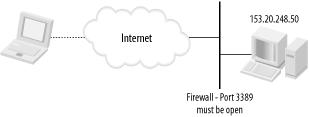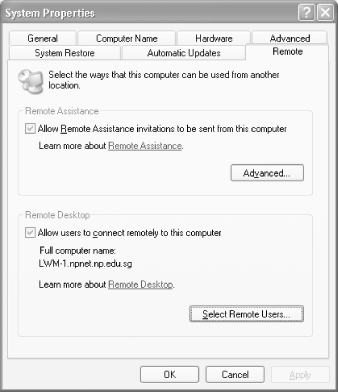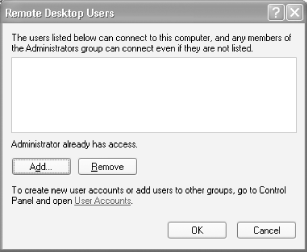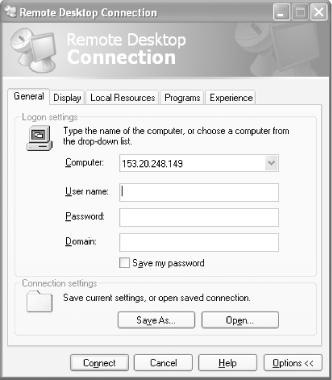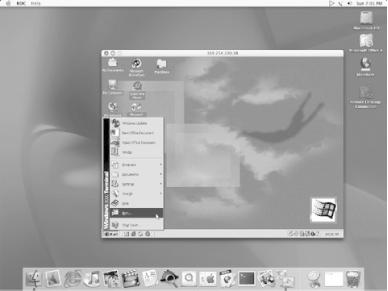One of the tools shipped with Windows XP Professional is Remote Desktop. Remote Desktop allows you to connect to a remote computer (see Figure 10-15) as if you were sitting right in front of it. This is useful in situations where you need to access the network resource in your office while you are on the road (in which case Remote Desktop should be used through a VPN; see Section 4.2 in Chapter 4).
Remote Desktop uses the Remote Desktop Protocol (RDP), the same protocol used by Terminal Server (also known as Terminal Services in Windows 2000). Remote Desktop works on low-bandwidth connections, since it transmits only keystrokes and mouse events to the host, which then sends back screen information for the client to display.
Tip
Remote Desktop is only available in Windows XP Professional. It is not included in Windows XP Home Edition.
To allow remote users to connect to your computer:
Click Start → Settings → Control Panel → System and select the Remote tab (see Figure 10-16).
Tip
If your machine is located behind a firewall, you need to open up port 3389. See Section 5.4.12 in Chapter 5.
Turn on the “Allow users to connect remotely to this computer” checkbox.
By default, administrators are given access. Click on the Select Remote Users... button to give access rights to other nonadministrator users (see Figure 10-17).
To use Remote Desktop to connect to the remote host:
Go to Start → Programs → Accessories → Communications → Remote Desktop Connection (see Figure 10-18).
Enter the IP address of the remote host and enter the username, password, and domain name (if required). You can click on the various tabs (Display, Local Resources, Programs, and Experience) to customize the options available (such as screen size, audio output, etc.).
You can now view the remote display either in a window or full screen.
Using Remote Desktop, you can:

